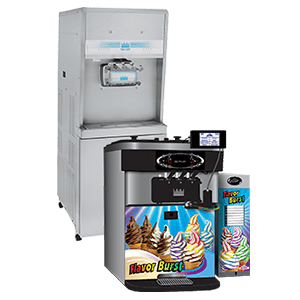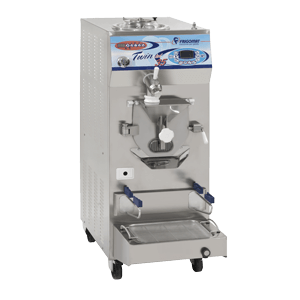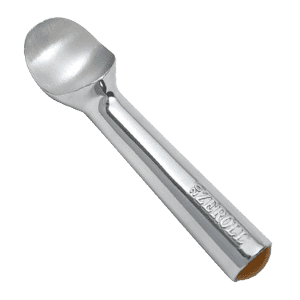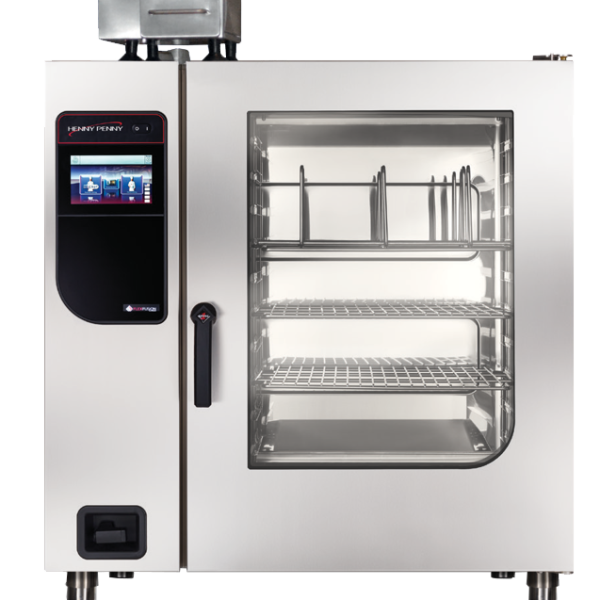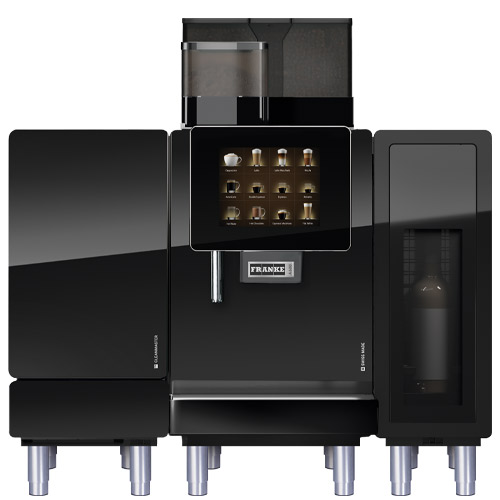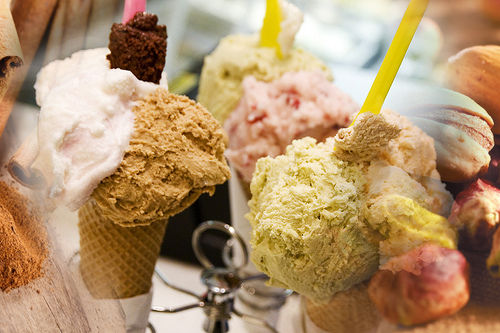Gelato is an interesting product to add to an existing dairy bar or in a restaurant wanting a little something extra….
But do we really know what gelato is and where this product comes from?
Definition:
Gelato is an Italian ice cream similar to American ice cream, which is more often called frozen milk. Gelato is made from whole milk rather than cream, so it contains less fat and less air than normal ice cream. This difference gives it a greater concentration of flavour and transforms the texture of the product which is denser than ice cream.
Varietes:
Gelatis comes in many flavours. Flavours that could be said to be more Italian include vanilla, chocolate, hazelnut, a mixture of chocolate and hazelnut, pistachio, coffee, caramel and cinnamon.
The so-called contemporary gelaterias will modernize flavours and adapt them to current tastes, but also to the taste of their customers. It is therefore not uncommon to see fruit flavours (strawberry, coconut), popular drinks (cappuccino, chai tea or even alcoholic drinks like champagne), nuts (roasted almonds) or even famous desserts. (Cheesecake, tiramisu, apple crisp or even crème brulée.) The variations are endless and the challenge for gelaterias is to stand out from the crowd by offering unique but tasty flavours.
Composition:
Gelatis are made from a base of milk, a little cream, eggs and sugar which are then mixed with aromatics, such as vanilla or chocolate. In the gelato industry, eggs are more often replaced with other stabilizing substances.
Historical:
The first mentions of gelatis are recorded in 3000 BC. B.C. when Asian cultures discovered that it was possible to eat ice and pilled berries. Five hundred years later, it had become customary for pharaohs to offer their guests a cup of sweet ice cream with fruit juice. The Italians known at that time as Romans began the ritual of eating ice coming from the Etna and Vesuvius volcanoes, covering them with honey.
Legend has it that it was during the Italian Renaissance that the great tradition of typically Italian gelato began. It was more precisely at the court of the famous Medici family in Florence that it all began with the sponsorship of a competition (the best frozen dessert). A man named Ruggeri di Firenze, a chicken farmer and cook in his spare time, took part in the competition. He prepared a dessert of sweetened fruit juice and crushed ice (similar to today’s sorbet) which won him the competition. It is also said that Catherine de Medici took Ruggeri with her to Paris, during her marriage to the King of France.
In the late 1500s, the Medici family commissioned the famous artist and architect Bernardo Buontalenti to prepare a grandiose celebration for the visiting King of Spain. Using his culinary skills to present an intricate and eye-pleasing display, Buontalenti presents the King of Spain with a creamy dessert we now call gelato. Buontalenti is considered the inventor of gelato.
But it was Francesco Procopio dei Coltelli, a famous restaurateur who made gelato known throughout Europe. Procopio moved from Palermo to Paris and opened a café which quickly became the hub of everything new, whether it was chocolate, exotic coffee, or even refined gelato served in small glasses resembling egg cups. The restaurant, known as Procope, quickly became a great success and gelato spread throughout France and other parts of Europe.
Gelato first appeared in the Americas in 1770, when Giovanni Basiolo brought the product to New York. At this time, there are two stages of gelato – one made by mixing water with fruits like lemon and strawberries (also known as Sorbetto) and another made by mixing milk with cinnamon, pistachio, coffee or chocolate. In 1846, the hand-cranked freezer (the ancestor of the ice-cream machine) was refined and changed the way Americans made desserts. The freezer kept the mixture constantly moving and cooling throughout operation, which transformed a product that was granular into a creamy product.
Northern and Southern Traditions
The history of gelato is closely linked to two regions: Dolomite in the far north of Italy and Sicily in the far south. In Dolomite gelato was made with milk, cream, sugar, eggs and natural flavourings. Ice was stored in the cantina (basement) during the winter. When summer brought tourists to the Dolomite mountains, the sale of gelato was one of the main sources of income for the inhabitants of the region. Gelato was considered a rich man’s dessert and people could afford it. Reduced tourism in Dolomite brought a large seasonal migration of Dolomite artisans to Austria, Germany, Switzerland and France to sell gelato in the wealthy communities there. This tradition made Italians dominant in the milk-based gelato business both in the northern regions of Italy and in neighbouring countries.
In the far south, gelato was primarily made with water. Low in fat and slightly higher in sugar content, it was called sorbetto or “sorbet” in French and English. Southern gelato producers used techniques similar to those in the Dolomites region, particularly in Sicily where underground storage areas, some as deep as 30 metres (over 90 feet) were used to store compacted snow. Like their northern counterparts, Sicilian artisans travelled to neighbouring countries to sell their dessert to wealthy customers.
Today’s modern production methods preserve the best of tradition – flavour and freshness – while making gelato accessible to everyone. There is not a tourist in Italy who does not appreciate the magnificent marvel known as gelato.

